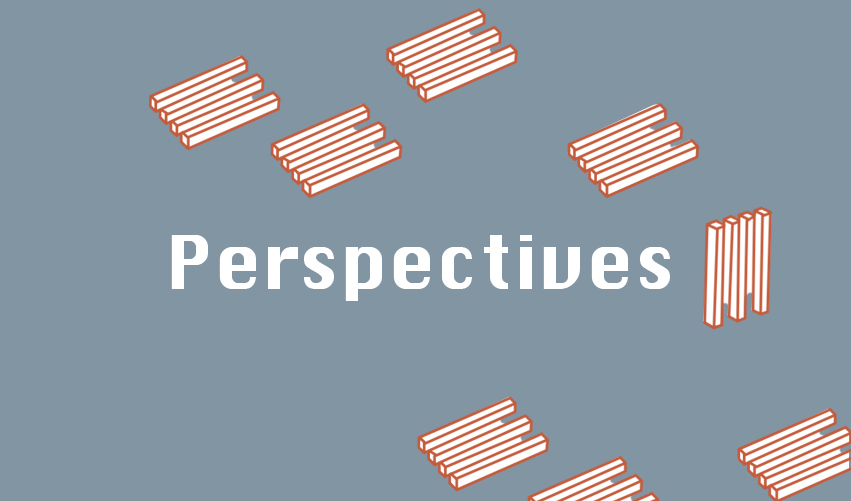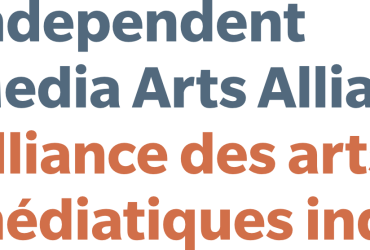
Listen, Witness, Transmit: National Indigenous Media Arts Gathering
By Missy LeBlanc
This article is part of Perspectives: a series of online reflections from the Canadian media arts community, created with the support of the Canada Council for the Arts.
In 2016-2017, IMAA presented a series of two-day gatherings within the Canadian media arts sector, focusing respectively on Sound Art, Analogue Film, and Digital Strategy. Each gathering took place in a different Canadian city, exchanging views and strengthening ties within these far-reaching communities, while also offering an important space for focused conversations on pressing issues faced by each sector. With the idea to continue the discussions in a public format, IMAA has commissioned written reflections from several authors on a subject of their choosing with relevance to the discussions.
This reflection by Missy LeBlanc is in response to the National Indigenous Media Arts Gathering that took place in June 2018 at Wanuskewin Heritage Park in Saskatoon.
***
June 12-15, 2018 – Saskatoon, SK
In June 2018 the National Indigenous Media Arts Coalition (NIMAC) in partnership with the Independent Media Arts Alliance (IMAA) held a national gathering at Wanuskewin Heritage Park in Saskatoon. The gathering—Listen, Witness, Transmit— brought Indigenous scholars, artists and cultural workers, along with non-Indigenous allies and media arts organizations together for three days of panel discussions, workshops, exhibitions, performances and screenings. The gathering was centered around Indigenous resurgence with each day dedicated to a specific resurgence practice— listening, transmitting, and witnessing.
The night before the official gathering start, there was a community feast to welcome panellists and participants. Alongside the feast was a viewing of Cree Métis artist Jason Baerg’s and Fransaskois artist Jean-Sébastien Gauthier We Are Star People, an interactive installation based on Cree cosmology that takes the viewer on a journey to Pakone-Kisik (Pleiades star cluster). The feast and installation was a way for all those involved to get to know one another and to start building relationships for the often heavy conversations that were to come during the remainder of the week.
For each day of the gathering, a film screening corresponding to the day’s theme was showcased over the lunch hour. All of the screenings were curated by Indigenous curators and featured films and video art created by Indigenous filmmakers and artists. On the first day, I had the opportunity to curate the first film screening, Reverberate, which reflected the theme of listening. Filmmaker, artist and curator Eli Hirtle (Cree, British, and German) used the theme of witness on day-two for his film screening micimwaci: kayâs, mekwâ, nîkânote // ᒥᒋᒪᐧᒋ: ᑲᔮᐢ ᒣᑳᐧ ᓃᑳᓄᑌ // timeless: past, present, future. For the last day of the gathering, Jennifer Smith (Métis) reflected on transmission in her film screening The Future.
The gathering kicked off with an opening from keynote speaker and powerhouse media matriarch, Métis filmmaker Marjorie Beaucage. Beaucage opened up the gathering with a poem and a discussion on storytelling. For Beaucage, stories are medicine and artists are storytellers. Stories connect us all and it is the responsibility of artists, as storytellers, to share and transmit these gifts and medicine. Beaucage ended her keynote with a screening of Giving Back, a video commemorating the 25th anniversary of the Aboriginal Film and Video Art Alliance gathering in Banff. The gathering was a way to create space where Indigenous artists could explore their stories in their way—something that is still being fought for today.
The first panel discussion “(Dis)Organizational Structures” was moderated by Jennifer Smith and featured panellists Lori Blondeau of TRIBE Inc. (Cree/Saulteaux/Métis), Dr. Erin Sutherland of Ociciwan Contemporary Art Collective (Métis and settler), and Tania Willard of Bush Gallery (Secwépemc and settler). The panel explored Indigenous arts organizations from across Canada that operate in a collective framework and utilize Indigenous methodologies and ways of knowing within their organizational structures. Through the use of personal narratives, the panellists shared their thoughts on why such collective models—rather than the Western white-cube model of organization—was the best fit for their organizations. They also spoke on the use of Indigenous labour within non-Indigenous spaces and what that means when it comes to the presentation of artistic work; dedicated spaces, or lack thereof, for Indigenous artists and collectives; and what sovereign Indigenous spaces could look like.
Day two of the gathering started with a lively panel discussion. “The Canada 150 Hangover” was moderated by Ariel Smith (nêhiyaw and Jewish) and featured Jason Baerg, Jamie Isaac (Anishinaabe), and Janet Rogers (Mohawk/Tuscarora). The panel delved into the topic of post-reconciliation and post-Canada 150 funding, and how Indigenous artists and arts organization can continue with the important conversations that were started during the ramp up to Canada’s sesquicentennial in 2017. Rogers, a prolific poet and sound artist, suggested that artists need to occupy and take back space and use it authentically rather than taking up space that is given. For Rogers, Indigenous lands are not stolen, but occupied lands, and the only way we are to get them back is to take the land back. Artists, as carriers of culture, can facilitate the occupation by taking back physical (gallery) space, land, and even the airwaves. Indigenous occupation will lead to Indigenous survival. Isaac, who is the Curator of Indigenous and Contemporary Art at the Winnipeg Art Gallery, works within and outside of colonial institutions. She noted that we are not at the beginning and that there has already been much work done by Indigenous cultural workers in the past, citing the 1992 Task Force Report on Museums and First Peoples, and that it is now time for institutions to address these calls to action. Baerg, an Assistant Professor in Indigenous Practices in Contemporary Painting and Media Art at OCAD University, spoke on his experience of decolonizing institutions by providing source material for his students and encouraging them through art. There has been much labour performed by many Indigenous artists and cultural workers to get us to where we are today, but it is time for colonial institutions to do some of the labour that is required for real structural change.
On the final day of the gathering, participants were encouraged to think about the theme of the day, transmit, and how they can continue the conversations that were started at the gathering once they return home. The panel “Publishing and the Self” moderated by Lindsay Nixon (Cree/Métis/Saulteaux), featured Joi T. Arcand (Cree) speaking on the zine Kimiwan, the blogger and arts writer Amy Fung, Victoria Inglis from Red Rising Magazine (Dënesułįne and Nîhithaw), and Dr. Julie Nagam, Chair of the History of Indigenous Art in North America, a joint appointment between the University of Winnipeg and the Winnipeg Art Gallery (Métis – Anishinaabe/French/German/Syrian). The panellists discussed ways of thinking and how, as Indigenous people, we can write our own histories and share our own stories. The panellists discussed the importance of archival documentation and dissemination for future generations by creating source material written from Indigenous perspectives and voices; the importance of giving space to voices that are not usually heard; and how and when to prioritize Indigenous languages over English within publishing.
Listen, Witness, Transmit focused on issues facing Indigenous media artists and organizations. However, these issues and topics are important to share with the larger media arts community. Indigenous artists and cultural workers have worked, and will continue to work, for the space and recognition they have received, but they cannot continue to do so alone. It is with the ethical allyship of non-Indigenous media artists and organizations that the space can be provided for these conversations to continue to grow.
BIO
Missy LeBlanc is an arts administrator and emerging curator of Métis, Cree and Polish decent. She recently completed an internship at the National Museum of the American Indian, Smithsonian Institution in Washington, DC and is currently the Program Coordinator for Ociciwan Contemporary Art Collective. LeBlanc holds a Bachelor of Arts from the University of Alberta, majoring in the History of Art, Design, and Visual Culture and Sociology, as well as a Diploma in Arts & Cultural Management from MacEwan University. LeBlanc was born, raised, and is currently based in Edmonton, AB.
Articles
Newsletter April | Infolettre avril 2024
This month’s news at a glance –» Click here! IMAA NEWS✦ Open Letter re: Cuts...
Read moreOpen Letter re: cuts at Canadian Heritage
As a member of the Canadian Arts Coalition (CAC) IMAA has signed onto an Open Letter to...
Read moreThe interConnect resources are online!
During the summer and fall of 2023, interConnect brought together artists, arts professionals, and organizations...
Read more





























